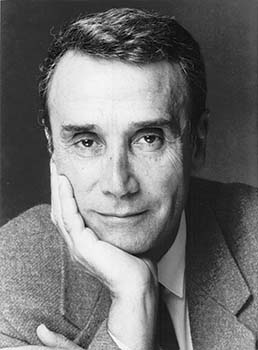
Biography
When he graduated from ballet school in 1946, Pierre Lacotte, together with his fellow graduates, was enrolled – as per long-established tradition – in the corps-de-ballet of the Paris Opera. By 1951 (at the age of 19!) he had become principal dancer of the company. He danced the whole classical and neoclassical repertoire. But before long, as others before him had, he left this famous company. He worked in America, where he even studied Martha Graham’s modern dance techniques. Later, he set up his own company, Ballets de la Tour Eiffel (1955), with which he toured throughout Europe. Then, for six years, he was director of the Ballet National de la Jeunesses Musicales de France where he met Ghislaine Thesmar and Michael Denard – the company’s future stars. It was for them that he choreographed the best of his original works. Among his ballets are Gosse de Paris with music by Charles Aznavoure, 24 Heures de la Vie d’une Femme, based on the novel by Stefan Zweig, to music by Herve Niquet, and La Dame aux Camelias to music by Verdi… But it was his reconstruction of long forgotten works of the XIXth century that was to make him world famous.At the end of the 60’s, the manuscripts of Jean-Marie Schneitzhoeffer’s La Sylphide, the first masterpiece of the romantic age, which, in 1832, Filippo Taglioni mounted in Paris for his daughter, Marie, fell into Lacotte’s hands. This ballet had long disappeared from the Paris Opera repertoire. Lacotte decided he would revive it. He spent three years gathering a huge ‘dossier’ on the subject. And he suggested to a French television channel that they make a ballet-film of La Sylphide. This film, which was premiered in 1972 with Ghislaine Thesmar as the Sylphide and Michael Denard as James, had such a success that Lacotte and the two dancers were invited to do a production of the ballet for the Paris Opera and, what is more, were taken on as ‘stars’. Thus began a new stage in Lacotte’s career.
During the years which followed, Pierre Lacotte revived a whole series of romantic ballets for the world’s best ballet companies and its leading dancers. Among these are – La Fille du Danube, Marco Spada (for Rudolph Nureyev), La Gitana, L’Ombre, Le Lac des Fees, Coppelia.
In 1976, for himself and the enchanting Paris Opera star, Dominique Khalfouni, the ballet master revived the pas-dedeux from the ballet, Le Papillon, to music by Jacques Offenbach, the only ballet to have been choreographed by the legendary Marie Taglioni.
For many years, Pierre Lacotte was director of the Ballet de Monte Carlo, and the Nancy Ballet Company.
He also worked in Russia where, in 1980, he produced Nathalie, ou la Laitiere Suisse for Ekaterina Maksimova and The Moscow Classical Ballet ensemble. The fragments he had reconstructed from the ballets, La Vivan-diere, and Le Papillon, were included in the program, An Evening of Old Choreography, presented at the Kirov Theatre in 1979. They were danced by Alla Sizova and Irina Kolpakova.
His La Sylphide was danced by the Novosibirsk Ballet Company at the Novosibirsk Theatre of Opera and Ballet (1979).
In 2000, he mounted La Fille du Pharaon at the Bolshoi Theatre (world premiere of his version of the ballet).
In 2006, he staged Ondine at the Mariinsky Theatre.
In 2011, his La Sylphide was mounted at the Stanislavsky and Nemirovich-Danchenko Moscow Music Theatre
In 2013, he returned to the Bolshoi Theatre to produce a new version of Marco Spada.



